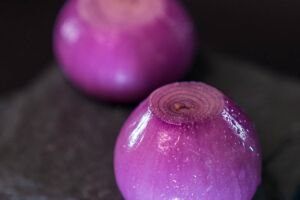Introduction
In today’s fast-paced world, maintaining a healthy diet is more important than ever. When it comes to balanced nutrition, whole wheat roti emerges as a clear winner. At [Your Company Name], we understand the significance of good food choices. We present to you an in-depth exploration of whole wheat roti, shedding light on its nutritional benefits, preparation methods, and how it fits seamlessly into your daily diet. When it comes to maintaining a healthy diet, incorporating nutrient-rich foods is essential. One such food that deserves a spot on your plate is wheat roti. Not only is it a staple in many cuisines around the world, but it also offers a myriad of health benefits. In this blog post, we will explore the incredible nutrients in wheat roti and why it should be a part of your daily diet.
Key Nutrients In Wheat Roti
Wheat roti, also known as chapati, is a traditional Indian flatbread made from whole wheat flour. It is a staple food in many Indian households and is known for its nutritional value. Here are the key nutrients you can find in a typical wheat roti:
- Carbohydrates: Wheat roti is primarily composed of carbohydrates, which provide energy to the body. These carbohydrates are in the form of complex carbohydrates, which are digested slowly and provide a sustained release of energy.
- Dietary Fiber: Whole wheat flour used to make roti contains dietary fiber, which is essential for digestive health. Fiber helps regulate bowel movements, prevent constipation, and supports a healthy gut.
- Protein: Wheat roti contains a moderate amount of protein. Protein is crucial for building and repairing tissues, supporting immune function, and maintaining overall body structure.
- Vitamins: Wheat roti is a good source of several B vitamins, including B1 (thiamine), B2 (riboflavin), B3 (niacin), and B6 (pyridoxine). These vitamins play a role in converting food into energy, supporting brain health, and maintaining healthy skin, among other functions.
- Minerals: Wheat roti contains minerals such as iron, magnesium, phosphorus, and zinc. Iron is important for oxygen transport in the blood and preventing anemia, while magnesium and phosphorus are essential for bone health and various cellular processes.
- Trace Elements: Wheat roti also provides small amounts of trace elements like selenium, which acts as an antioxidant and supports the immune system.
It’s important to note that the nutritional content of wheat roti can vary based on factors such as the type of wheat flour used, the size of the roti, and the cooking method. Whole wheat flour retains more nutrients compared to refined flour, as it includes the bran and germ layers of the wheat kernel.
Incorporating a variety of foods in your diet along with wheat roti will help ensure you receive a well-rounded intake of nutrients to support your overall health.
What Is The Nutritional Value Of Wheat Roti?
Wheat roti, also known as chapati or Indian flatbread, is a staple food in many countries and is widely consumed due to its nutritional benefits. The nutritional value of wheat roti can vary based on the size and thickness of the bread, as well as the type of flour used. However, here is a general overview of the nutritional content in a typical 100-gram serving of whole wheat roti:
Calories: Approximately 297 kcal
Carbohydrates: Around 56 grams, providing energy to the body.
Protein: About 9 grams, which is essential for building and repairing body tissues.
Dietary Fiber: Roughly 6.4 grams, aiding in digestion and promoting a feeling of fullness.
Fat: Only about 2 grams, making it a low-fat option.
Vitamins and Minerals: Wheat roti contains small amounts of various vitamins and minerals, including B vitamins like folate and niacin, as well as minerals like iron, magnesium, and zinc.
It’s important to note that these values are approximate and can vary based on the specific recipe and preparation method. Additionally, the nutritional content can be influenced by the accompaniments or fillings served with the roti. For a more accurate nutritional profile, it’s recommended to refer to the packaging or specific nutritional analysis for the particular brand or recipe you are using.
How Much Calories In 1 wheat Roti?
The calorie content in a single wheat roti (or chapati) can vary based on its size and thickness. On average, a medium-sized whole wheat roti (about 6 inches in diameter and 70 grams in weight) contains approximately 104-120 calories. However, for a precise value, it’s best to refer to the specific recipe or packaging of the roti you are consuming, as calorie counts can differ based on ingredients and preparation methods.
Hoe Much Calories In 2 Roti and Sabzi?
| Item | Calories |
|---|---|
| Two Whole Wheat Rotis | 208-240 |
| Vegetable Sabzi (150g) | 150 (approx.) |
| Total Calories | 358-390 |
Why Whole Wheat Roti Reigns Supreme?
Health Benefits Galore:
1. Heart Health: The high fiber content in whole wheat roti helps in lowering cholesterol levels, reducing the risk of heart diseases.
2. Weight Management: Its low-calorie nature, coupled with high fiber, aids in weight control by promoting a feeling of fullness and curbing unnecessary snacking.
3. Diabetes Management: Whole wheat roti has a lower glycemic index compared to refined grains, making it a better choice for individuals with diabetes as it helps in regulating blood sugar levels.
Preparation and Inclusion in Your Diet
1. Simple Recipes: Enjoy whole wheat roti with a variety of side dishes, such as lentils, vegetables, or yogurt, enhancing its taste and nutritional value.
2. Quick and Easy: With just a few ingredients, you can prepare whole wheat roti within minutes, making it a convenient option for busy individuals.
3. Versatility: Use whole wheat roti as a base for healthy wraps, sandwiches, or even as a pizza crust alternative, expanding your culinary horizons.
Nutrition Facts:
The Power of Fiber
Wheat roti is a fantastic source of dietary fiber, which plays a crucial role in maintaining a healthy digestive system. Fiber aids in regulating bowel movements, preventing constipation, and promoting overall gut health. Additionally, it can help reduce the risk of developing chronic conditions such as heart disease, diabetes, and certain types of cancer.
Furthermore, the high fiber content in wheat roti aids in weight management. It helps you feel fuller for longer, reducing the chances of overeating and aiding in weight loss or maintenance.
Essential Vitamins and Minerals

Wheat roti is packed with essential vitamins and minerals that are vital for your overall well-being. It is an excellent source of B vitamins, including thiamine, riboflavin, and niacin, which are essential for energy production and maintaining proper brain function. These vitamins also play a crucial role in the metabolism of carbohydrates, proteins, and fats.
Additionally, wheat roti contains minerals such as iron, magnesium, and zinc, which are essential for maintaining healthy blood cells, supporting a strong immune system, and promoting optimal growth and development.
Antioxidant Powerhouse
Antioxidants are compounds that help protect the body against the damaging effects of free radicals. Wheat roti is rich in antioxidants such as phenolic acids, flavonoids, and selenium. These antioxidants help reduce inflammation, lower the risk of chronic diseases, and promote healthy aging.
Moreover, the antioxidants found in wheat roti help protect the body against oxidative stress and may even play a role in reducing the risk of certain types of cancer.
Incorporating Wheat Roti into Your Diet
Now that you’re aware of the incredible nutrients in wheat roti, it’s time to start incorporating it into your daily diet. There are various delicious ways to enjoy this nutritious food. You can pair it with your favorite curries, use it as a wrap for sandwiches, or even make it into crispy, oven-baked chips.
Remember to opt for whole wheat roti whenever possible, as it retains more nutrients compared to refined wheat options. You can also experiment with different flour combinations such as multi-grain or ragi to add even more nutritional value.
So, why wait? Start reaping the numerous health benefits of wheat roti today and take a step towards a healthier lifestyle!
Conclusion: Elevate Your Health with Whole Wheat Roti
Incorporating whole wheat roti into your daily diet can transform your health and well-being. Its impressive array of nutrients, coupled with its delicious taste and versatility, make it a superior choice for individuals aiming for a balanced and fulfilling diet. At Hygeia, we encourage you to embrace this nutritional gem, savor its flavors, and reap the rewards of a healthier lifestyle. Make the smart choice today and indulge in the goodness of whole wheat roti.
















